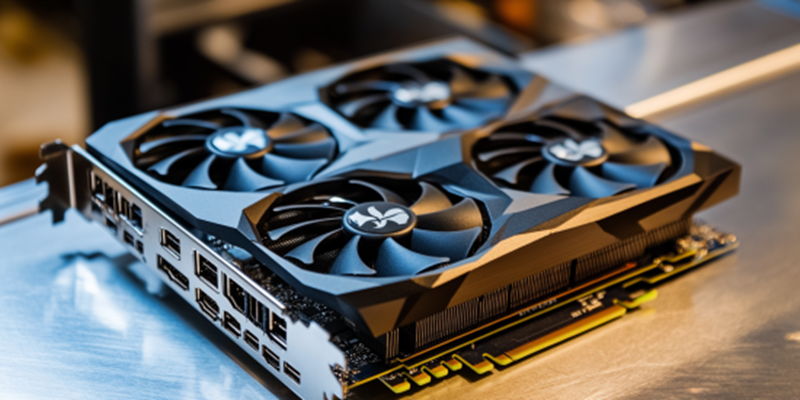The gaming world is abuzz with anticipation for AMD’s next big move: the launch of at least four GPU SKUs within its Navi 48 and Navi 44 powered RDNA 4 “Radeon RX 8000” lineup. This series signifies AMD’s renewed focus on the mainstream gaming audience, a strategic pivot from previous high-end and enthusiast market targeting. The shift comes after the RX 7000 series underperformed in capturing a substantial market share, prompting AMD to rethink its approach. AMD’s historical success in targeting mainstream gamers with architectures like Polaris and first-gen RDNA sets a precedent for this strategic reorientation.
AMD’s Strategic Reorientation
AMD’s history reflects a pattern of targeting mainstream gamers, evident from its Polaris and first-generation RDNA architectures. However, the underwhelming market reception of the RX 7000 series has accelerated this shift back to the mainstream segment. Notably, the RDNA 4 series will be comprised of two main chips: Navi 48 and Navi 44, each housing two SKUs. Though specific details on specs and configurations remain under wraps, AMD’s AIB partners are already booting up the initial samples.
The anticipation around CES 2025 for the official reveal marks AMD’s meticulous planning. With the market release slated for the first quarter of that year, all eyes are on how these GPUs will position themselves amid stiff competition. Focusing on mainstream gamers isn’t uncharted territory for AMD. By drawing upon past strategies, the firm aims to capture the bulk of the gaming market, offering GPUs that strike a balance between performance and affordability.
Decoding the Navi 48 and Navi 44 Lineup
The nomenclature within AMD’s RDNA 4 reveals an intriguing pattern. The Navi 48 chip, which consists of two SKUs—R24D-E8 and R24D-E6—is designed to cater to a wide range of performance needs within the high-end of the mainstream market. Similarly, the Navi 44 chip also has two SKUs—R25D-P8 and R25D-P4—aimed at entry-tier mainstream users. Despite the absence of detailed specifications, these designations hint at a strategic layering to cater to various performance needs within the mainstream market. Given AMD’s proactive boot testing, these GPUs are likely refined and ready for competitive performance.
The precise details regarding the hardware configurations of these SKUs are yet to be disclosed, but the initial testing stages by AMD’s AIB partners indicate a close-to-final product version. As AMD gears up for the CES 2025 reveal, the market release, projected for the first quarter of the year, will be a litmus test for how these GPUs resonate with the target demographic. A successful launch could significantly bolster AMD’s standing in the highly competitive GPU market.
Competitive Landscape
The GPU market is notoriously fierce, and AMD faces formidable adversaries. Intel continues to target the mainstream-to-high-end audience with its Arc Battlemage GPUs. Meanwhile, NVIDIA is gearing up for the release of its Blackwell “RTX 50” series. Analysts speculate that NVIDIA might either expedite a mid-range RTX 50 solution or implement price cuts to counter AMD and Intel’s new offerings. This competitive environment necessitates that AMD’s Navi 48 and Navi 44 not only deliver compelling performance but also adopt aggressive pricing strategies.
Striking the right balance will be crucial for capturing the mainstream segment. AMD’s focus on mainstream gamers aligns well with the larger market dynamics, where affordability and performance are paramount. The ability to offer a well-rounded product that caters to this segment could give AMD a competitive edge, particularly if Intel and NVIDIA’s offerings are priced higher.
The Evolution of AMD’s RDNA Lineup
Understanding AMD’s past GPU architectures provides context to the RDNA 4 shift. The RDNA 1 lineup, with its 7nm process node and Navi 1X family, laid the foundation with the high-end Navi 10 featuring 2560 stream processors (SPs). RDNA 2 built on this with the Navi 2X family, maintaining the 7nm process but upping the ante with the flagship Navi 21 boasting 5120 SPs. The RDNA 3 and RDNA 2 hybrid in the Radeon RX 7000 series transitioned to a 5nm/6nm process, offering significant performance increases. Notably, the flagship Navi 31 featured 6144 SPs, while the high-end Navi 32 had 4096 SPs.
Moving to RDNA 4, AMD is expected to leverage a 4nm process node for its Navi 48 and Navi 44 chips. The omission of a Navi 41 flagship GPU in the RDNA 4 lineup further emphasizes AMD’s sharpened focus on mainstream and entry-tier markets. This decision to forego a high-end flagship model highlights AMD’s strategic pivot to areas where it perceives the most substantial market opportunities.
Market Implications and Future Prospects
The gaming community is buzzing with excitement over AMD’s impending release of at least four new GPU SKUs, powered by Navi 48 and Navi 44 within the RDNA 4 “Radeon RX 8000” lineup. This launch highlights AMD’s strategic pivot back toward mainstream gamers, moving away from its earlier focus on high-end and enthusiast markets. This shift was prompted by the underwhelming performance of the RX 7000 series in terms of market capture. Consequently, AMD decided to recalibrate its strategy. The company has a successful history of appealing to mainstream gamers with its Polaris and first-generation RDNA architectures. This track record sets a solid precedent for AMD’s renewed focus on a broader audience. By honing in on mainstream gaming, AMD aims to reclaim its competitive edge, striking a balance between performance and accessibility. This launch is not just another product release; it signifies a crucial course correction intended to recapture market share and win back the trust and enthusiasm of everyday gamers.

